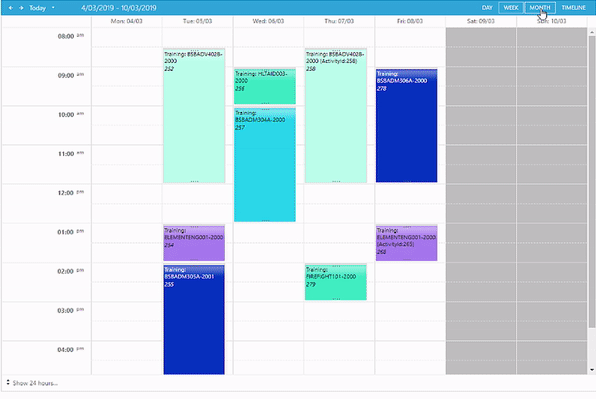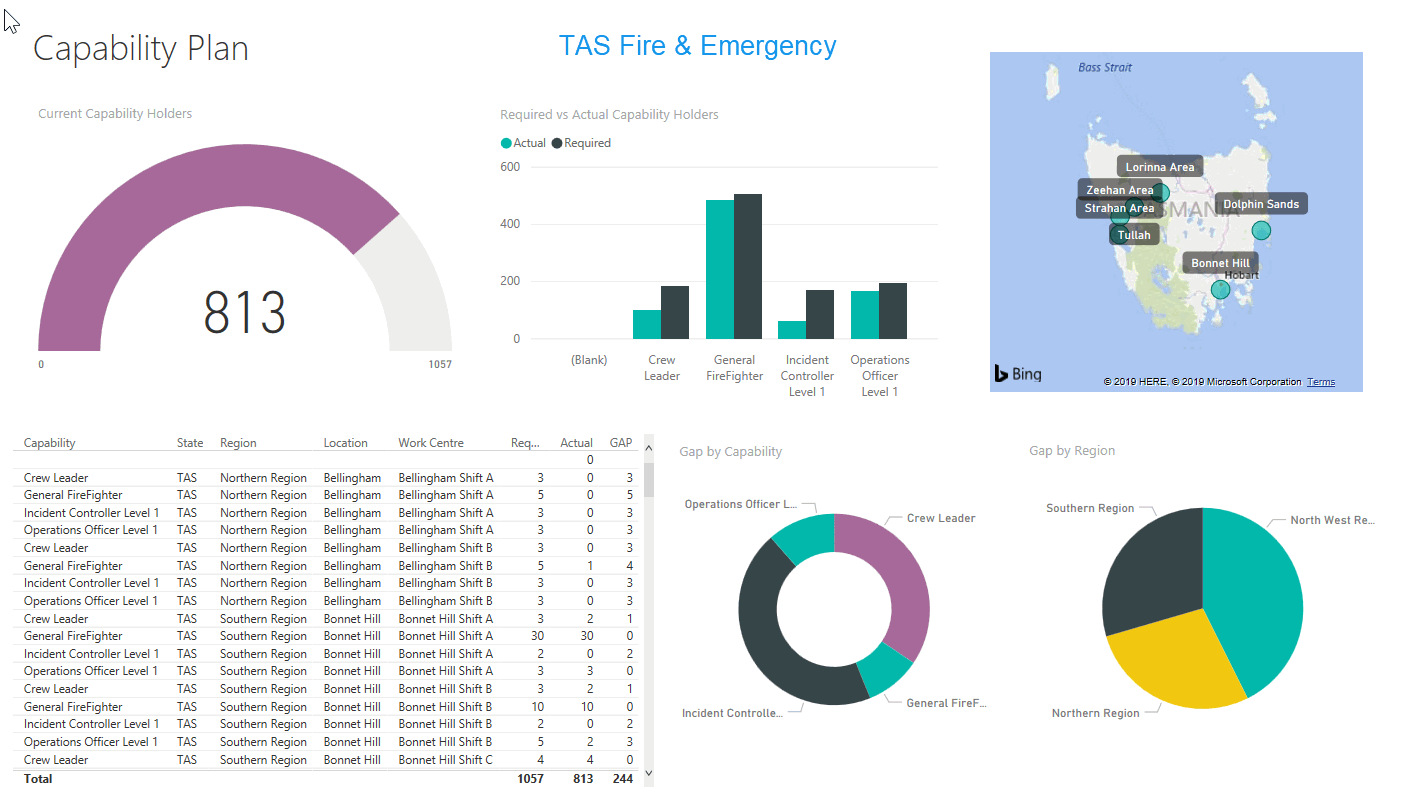
Big lesson learned in 2018: "Prepare your LMS at the start of the year so all your learning and development processes just work as expected for the rest of the year".
The time we wasted in reactive help desk support would have been much better spent offering proactive training and timely guidance to our customers. This year, we're putting those lessons into practice. This article acts like a checklist to help you organise your data, procedures, people and systems so that you can devote your attention to high quality training and assessment for the rest of the year. Time is money. You don't want to waste it cleaning blocked data drains.
Who should read this article?
Is your organisation or department responsible for training and assessment? If yes then this checklist is for you.
If you're an RTO, congratulations. You've just completed your first AVETMISS 8 submission. If you're in fire and emergency services you're just a couple of months away from closing out a horrendous fire season. It'll soon be time to get fire crews back into accreditation and currency training. Are you in a corporate L&D department? You know the score: ongoing L&D, performance meetings and inductions are your daily bread and butter.
Step 1 - User Training
Identify all the people who need to interact with the systems and get them into training. They'll need to become familiar with features and able to use the system confidently. Put your in house experts to work training new users and/or work with your system vendors. Vendors have a vested interest in your people being able to use the system efficiently, so they are likely to be cooperative and cost effective with their product training services. But you need to invest in this one way or another, data entry errors, inadequate reports, incomplete processes and general mistakes can be painful and disruptive.
Step 2 - Update your Capability / Course Framework
The reason training standards have focused on continuous improvement in recent years is so that your processes and frameworks can evolve and maintain high standards of quality. Those lessons and the feedback you you collected last year should now guide you to make the necessary changes this year. The changes start with your 'product', i.e. your training frameworks, your curriculum, capability matrix, training and assessment strategy; whichever of those terms are applicable in your environment.
Check that you have the latest Accredited Training packages and that you have a transition plan that caters to continuing and new learners.
How well are your in-house training, assessment, accreditation, performance criteria, and professional development courses aligned with the needs of your organisation? Have those needs changed over the year? Have new organisation compliance and commitments come into play over the last year? Do any of those require changes or additions to your framework? Many companies are now implementing changes to security, privacy, environmental, social and financial responsibilities. How do these impact your framework? Is your online course library well stocked with the types of content and quizzes your people need to maintain currency and perform better in their roles?
Example of a Capability Dashboard.
Step 3 - Role Development Plans or Training Plans
Now is the time to be working with your managers, industry partners and learners to determine what roles need to be filled and what training and performance metrics are required to fill them. I'm using the term 'Role Development Plans (RDPs)', but there are many names and variants for these plans: Performance Plans, Professional Development Plans (PDPs), Formal Training Plans (FTPs), Study Plans, Workforce Training and Development Plans to name just a few. Essentially, they capture the competencies that enable learners to gain confidence and successful out comes like: awards, advancement, certification or currency, or simply to know how to do their job better.
Although these artifacts are called 'Plans' smart learning management systems use them effectively to also track and record progress. Good training plans offer a complete and accurate record of a learners training and performance data. They are the bricks (or competencies) that build rooms (or team competencies) and eventually the whole house or (organisational competencies). Role Development plans trigger enrolment processes that can have multiple levels of notification and approval.
Step 4 - Schedule Training Events, classes and workshops
In order for learners to progress they need opportunities to learn, train and perform. Scheduling training events can be complex in organisations that match training needs to resource availability. Other organisations operate by simply blocking out adequate time slots and resources for the year whether or not the demand exits. And some allocate resources only on demand. Most organisations today offer an online course library that might cover a mix of accredited and non accredited programs. These often work in conjunction with instructor led or face-to-face training with stages for assessment and verification of competencies (validation). The training schedule is the ultimate training plan since it drives the processes of enrolment, participation, assessment, validation, certification, currency and accreditation. If your schedules are complex then starting the process early in the year and mapping out the whole year will save a lot of time, and will introduce structure to your processes.

Step 5 - Prepare Templates and Email Notices
Your system is part of a sophisticated communications network. It can send email notifications, generate and distribute certificates, prompt users to provide documents or evidence. It can also act as your contacts and campaign manager to help market and sell your products, or courses. Since these artifacts form identity and brand your organisation they need to reflect your logo, messages, styles and colours. But to communicate effectively they need to reflect the way you do business, i.e. they should instruct your users about what information and data you will send and what you expect to receive. Preparation involves composing email messages, laying out your certificates and testamurs, designing any custom reports that they system sends out and organising what information you need to collect in your forms. Your system should provide you with a set of "base templates" that you can customise to create your own custom templates.

Step 6 - Identify Nationally Accredited Courses for Reporting
There's a good chance you run a mix of in-house or industry courses that are not listed under the Australian qualifications framework (AQF). These might include: be ISO9000 courses that are applicable to your industry, inductions courses specific to your organisation or a collection professional development courses that you make available to your team members. In general you may not want to push these through the complex structures of the AVETMISS reporting system. Note that you can if you wish to.
Step 7 - Setup Accounts for USI, PRISMS, and NCVER Tools
If your business or the technology has changed you'll need to make sure your accounts are up to date. Example: USI has moved to a new login model called "Cloud Authentication and Authorisation (CAA)". In this model your system vendor is authorized to connect you to the USI services via a cloud account. You won't have to waste hours trying to find and validate Device AUSKeys. If you're changing you model to introduce international students as a CRICOS provider, or to offer VET Student Loans (VSL) then there are services like PRISMS, CHESSN and HEIMS that you'll need accounts for. As an RTO you also have access to the AVETMISS Validation Software (AVS). These accounts are generally required to enable your system to integrate with these services.
Step 8 - Perform end-to-end testing of the system
If offered as part of your system, use a Sandbox environment to test your systems end-to-end. From creating a course through to scheduling, resulting, awarding certificates, and reporting. Set up dummy data that closely represents your environment without exposing private data or risking your operational data. Experience the system as your users would, as and admin user, a learner, a trainer, a manager or a supervisor. While playing in the sandbox you can learn a lot, experiment safely and fully test your procedures. This can be an invaluable tool for continuous improvement.
Step 9 - Test Integration Paths.
For more complex systems integrated with HR, CRM, and Billing its easy to assume that things stay the same, but they don't! The data structures, business logic and web services associated with your system may well have changed since 2018. There's a more than even chance that any such changes will impact those integrations you rely on. A well design system will use version control to ensure that your systems remain stable until you've had the opportunity to test and accept the latest release. But that doesn't always happen, so it makes sense for you to do your own checking as part of your system testing. Run some sample data through the system and make sure the integration you expect to see with business systems is still operating as expected. The last thing you want is to discover that a significant batch of invoices isn't getting to your customers because the integration with MYOB, Xero or other billing systems has broken.
Step 10 - Update internal user help guides and documentation
May training organisations prefer to use the vendor documentation as a base to build their own internal help guides and user manuals. Check all your in-house user documentation against the vendors release notes and base manuals. Look for changes that may have impacted them and update your documents, videos, and screenshots accordingly. A lack of good user information is bad enough, but "misinformation' can be worse.
Step 11 - Build strong relationships with your recruitment and HR experts
You might well ask, "What on earth does this have to do with an LMS?". In summary, recruitment is a key stage in the workforce planning and development cycle. When training isn't the answer and you simply don't have the capacity to fulfill your business objectives, then recruitment is often your best route. Your LMS now points to the capabilities you need, but if you can't train people into those capabilities then you need to work with your recruitment experts to identify and source the right people. Then you need to induct and train them. These decisions impact the integration between HRIS and LMS. Making your recruiters aware of capability gaps, on boarding processes and employee career opportunities helps them to do their job. So, early engagement with your recruiters, against the backdrop of your capability framework is an important step in workforce planning and development, and that is the connection with your LMS.
In Conclusion
These preparation steps are important to the smooth running of your training and learning management systems. They should be performed at least once every year. At Bluegem we encourage our customers to call on our help and support to help with the spring cleaning. Together with our partners and advisers we can help you with a range of services that address the points raised in this article. We encourage you to contact us to learn more about how we can help with:
- Training your people
- Setting up curriculum and training schedules
- Building custom templates and workflow processes
- Auditing your system data for AVETMISS and compliance reporting integrity
- Applying your accounts to enable you to streamline reporting services
- Providing sandbox and sample data for process testing
- Integration documents and release notes with full risk assessment and impact analyses
- User documentation and change history to aid internal configuration management of user docs.
- Custom support, reports, and diagnostic tools
These services in combination with proactive guidance will help you to continuously improve and streamline your systems year on year, making yours the standout training organisation in 2019 and beyond.

